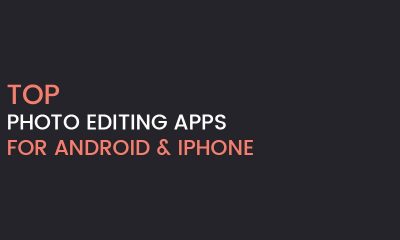Of course, there are more opportunities to work as a video editor than just managing social media content. Streamers on Twitch TV are branching out by creating highlight channels on YouTube. Even YouTubers themselves look to hire an editor while they focus on the networking and promotional side of their channel. Thus, as you can see, there are ways to make a living as a video editor. If you are willing to invest time and put effort into learning the craft, then do not hesitate and go for it. This article covers the most important steps aspiring video editors should take, so feel free to use it as a reference.
Step #1 – Look for Online Tutorials
Thanks to the demand for online education, finding tutorials should not be a problem. There are platforms like Skillshare and Udemy that have more professional-looking tutorials, but as expected, you will need to pay money to get the best that is available. On the other hand, YouTube also has a fair share of content creators who share their secrets about mastering video editing. Find a course that includes basics. You do not want to jump right into more complicated stuff before taking the beginner’s lessons. For example, not knowing what converting mp4 to avi does, or what makes editing software good can have negative effects later.
Step #2 – Find Good Editing Software
Speaking of video editing software, it can be quite difficult to pick one for someone who lacks experience. You should combine this step with the #1 of looking for online tutorials. If you find that following a tutorial is easy and you understand what the person is teaching you, then you can consider getting the same software that you see in the video. This also guarantees that you have the learning material. And if something is not clear, you can go back and rewatch the tutorial videos. Picking between software that is free and one that costs money is also something to think about. Free software might miss some key features, but it still works as a learning platform. After all, you may want to learn some stuff before you move on to software that requires payment.
Step #3 – Invest in a Fast Computer
A smoothly running computer will make the work easier. Video editing is a process that requires many resources, especially when you are encoding the video after finishing the editing part. Having a high-end computer feels nice in general, even if you are not working, but looking for ways to entertain yourself, like playing video games. Therefore, if you have the money, invest in the best laptop or PC you can afford.
Step #4 – Get Real Work Experience as a Freelancer
Once you get the basics down and start to feel like you can sell your services as a video editor, look for opportunities to work. Applying for a job at a big company might be too soon. Instead, check freelancer platforms like Fiverr or UpWork, as well as social media groups and forums. The pay may not be the best in some cases, particularly if there are other editors applying for the same work, but your primary goal here is to get real work experience and use it in the future.
Step #5 – Try to Create a Distinguishable Style
There are many video editors who have a distinguishable style and get hired because of what they bring to the table. This is something to consider for the future, but if you are learning video editing by following others, do not copy them completely. Instead, try to drift from the conventional style when possible and aim to create a unique approach that will make you stand out as one of the best video editors.
Step #6 – Use Keyboard Shortcuts for Efficiency
Efficiency comes with experience. The more time you spend practicing, the better off you will be. However, there are some things that you need to adapt in your work routine as soon as you can. For instance, keyboard shortcuts. It will be much easier and faster to navigate if you memorize keyboards for each command.
Step #7 – Create a Personal Page
Make yourself available on the internet. You may find work as a freelancer by getting in touch with potential clients, but developing a personal website should still be one of the priorities. Showcasing your portfolio is harder than for someone like a graphic designer since videos require more space. Nevertheless, you can create a profile and provide links to your previous work as well as testimonies from customers to show how professional you are as a video editor.










